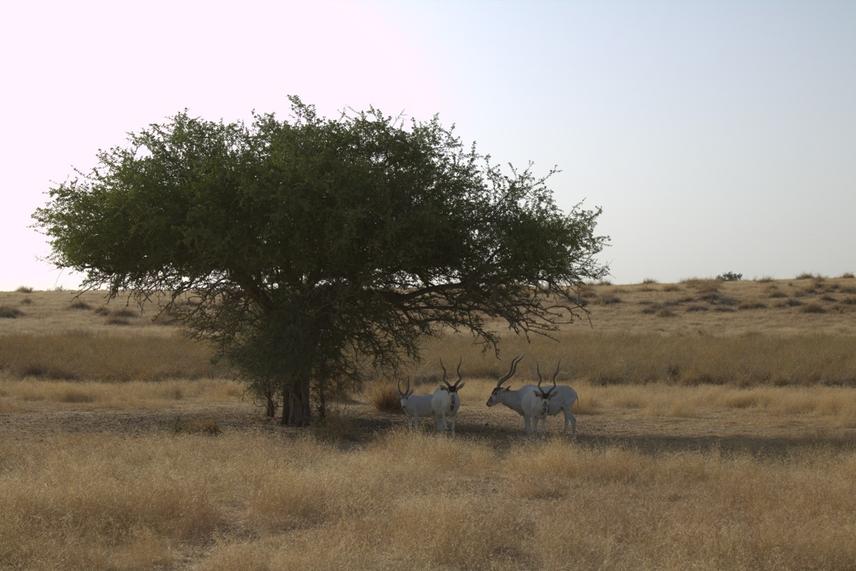Caleb Ngaba Waye Taroum
Formerly widespread in the Sahel-Saharan region, the two emblematic larger mammals, Scimitar-horned Oryx (Oryx dammah) and Addax (Addax nasomaculatus), were respectively extinct in the wild for the first and critically endangered for the second for more than 30 years. Their decline had several consequences for such ecosystems. However, since then, they have been reintroduced into the wild in 2015 (for Oryx) and 2020 (for Addax) in Chad, thanks to joint efforts of the Chadian government, the Environmental Agency of Abu-Dhabi under the lead of the NGO Sahara Conservation and partners.

Addax herd under Balanites aegyptiaca shade at sun fall. © Caleb Ngaba / Ngaba W. T. Caleb, PhD Project. OROAR, June 2025.
They have to face a unique challenge of "appropriating back their ancient land". Sharing their historical ecosystems with other livestock species and facing many other natural and anthropogenic factors are part of this singular reintroduction game. Therefore, the aim of our research is to assess the food resources availability and selectivity of the reintroduced species. This is to highlight their diet composition and the influence of other livestock mammals on the forage resources. We will use a mixed approach of seasonal plant surveys with the novel method of DNA barcoding analysis to define the plant diversity and availability, associated with metabolomics to describe the forage resources selectivity patterns. Our main goal is to efficiently provide strong information on ecological niches for policymakers, conservationists, and the scientific community, in order to prevent food competition and pasture degradation among wildlife and livestock in the OROA reserve in Central Chad.
Header: Practical field training on herbaceous taxonomic identification and sampling for metabolomics analysis. © Caleb Ngaba, Benjamin Tchamagoye, Anaclet Djasbeye by Yousra M. Saboun / Ngaba W. T. Caleb, PhD Project. OROAR, June.